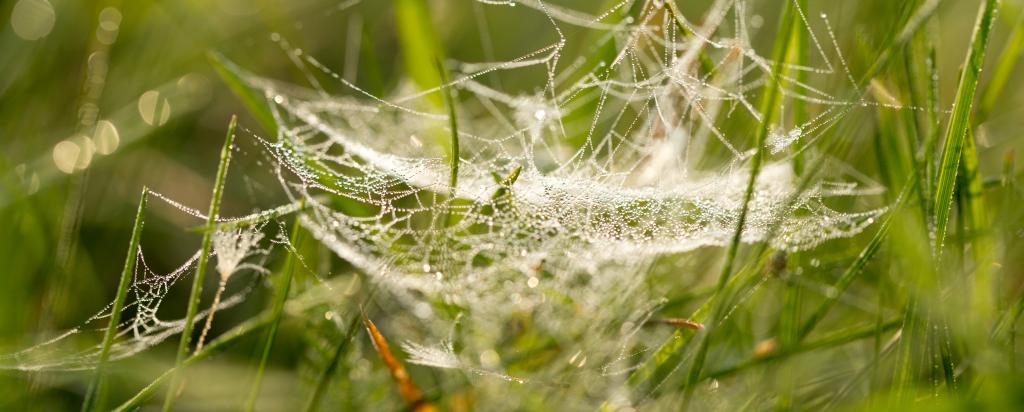

Published on the 21st October 2020 by ANSTO Staff
An international collaboration between the University of Melbourne, University of Bayreuth and ANSTO’s Australian Synchrotron provides the first insights into how the rare silk of the Australian basket-web spider retains its strength and resilient structure— allowing the spider to make a robust and rather exquisite silken basket.
The silk is so firm and remarkable that it enables the basket web to maintain its structural integrity without any support from the surrounding vegetation.
The insights into physical and chemical properties of this basket-web silk may be useful for the production of artificial spider silks, which have already shown strong potential as an advanced biomimetic material in textile and medical applications.
“The biochemical makeup of the silk thread cross-section, particularly secondary protein structures and complex carbohydrates, was examined on the Infrared Microspectroscopy (IRM) beamline at the Australian Synchrotron,” said beamline scientist and co-author, Dr Pimm Vongsvivut.

Credit: Hanyl et al, "Free-standing spider silk webs of the thomisidSaccodomus formivorus are made of composites comprising micro- and submicron fibers,” Scientific Reports, 10, 17624 (2020)
The high-resolution infrared technique, unique to the Australian Synchrotron’s IRM beamline and developed in-house, allows the chemical images of the silk cross-section to be acquired at an enhanced resolution down to 1-2 micrometres (see image above).
The results revealed for the first time that the remarkable lateral resilience, or stiffness of the basket web silk, is due to the synergistic or complementary arrangement of their fibres.
As explained by Professor Mark Elgar at the University of Melbourne, the silk microfibres with a diameter of about two to four micrometres are embedded in a polymer matrix, consisting of much thinner fibres arranged in a longitudinal direction.
These thinner fibres had a high proportion of saccharides that play a key role in the cohesion of the silk fibres, providing the strength to the silk thread.
The base of the basket web contained the spider eggs, which may represent the first documented example of a spider foraging web that has evolved as an extension of the protective egg case.
The research, published in Scientific Reports, was led by Elgar at the University of Melbourne and Prof Thomas Scheibel at the University of Bayreuth. The first author was Christian Haynl at the University of Bayreuth. Dr Mark Tobin, Principal Scientist of the Australian Synchrotron’s IRM beamline, was also a co-author.
Content adapted from the University of Melbourne website. Read the full article by Prof Elgar.



